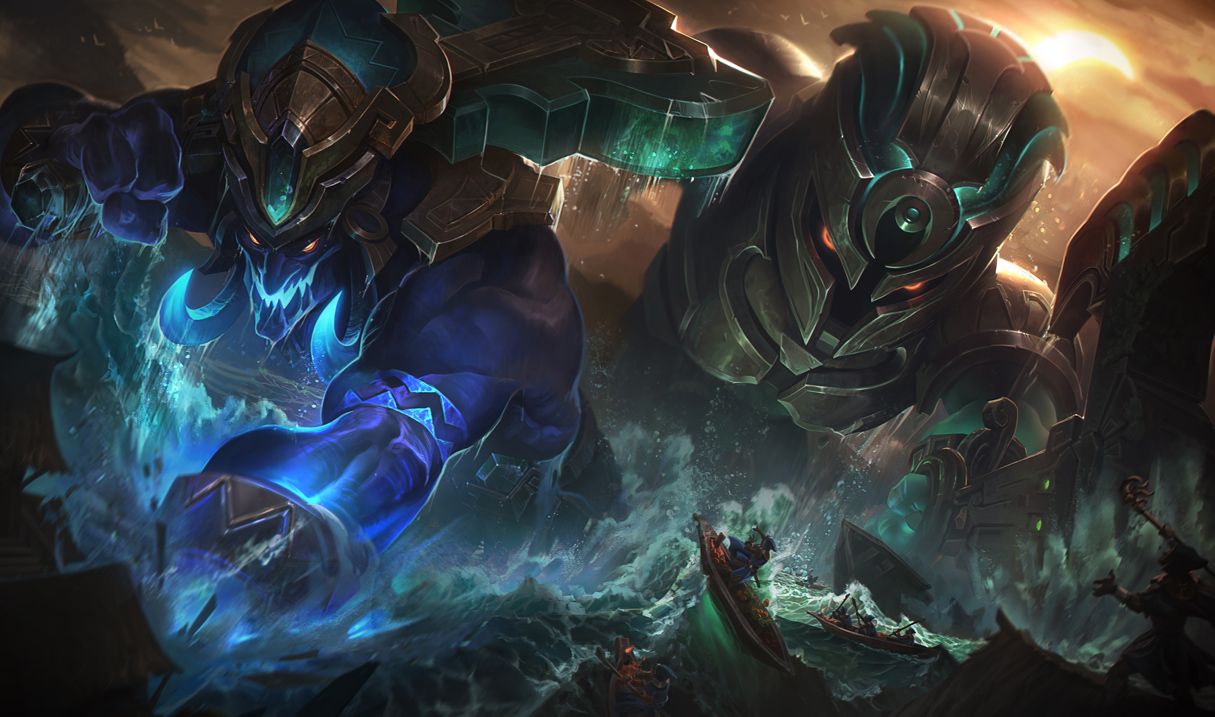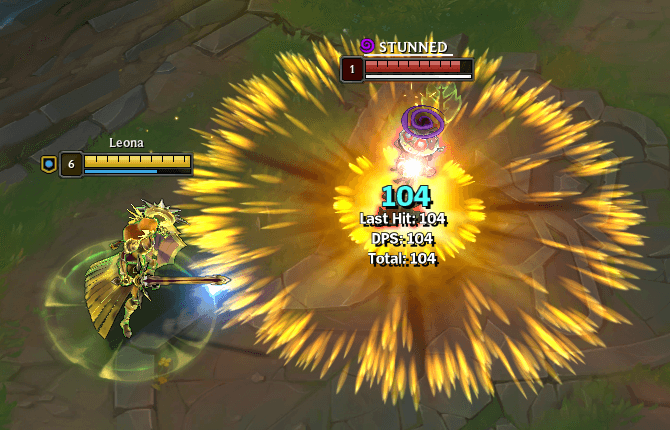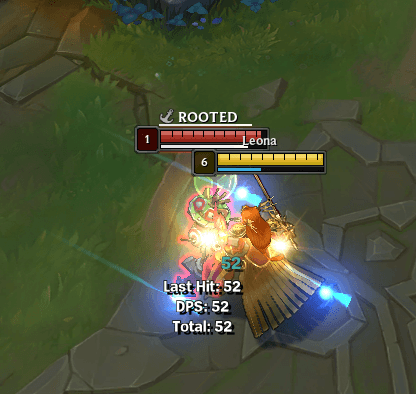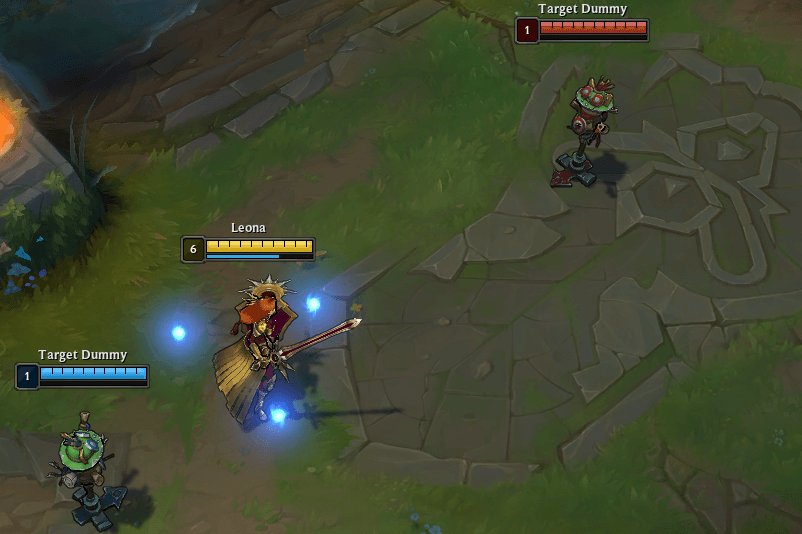How to Peel for Your Carry in League of Legends

When most players start playing League of Legends, they soon realize that there is one thing that they don't understand how to do. For most players that play in the Support role, that thing is peeling for their carries. Support players will feel like they are doing an excellent job initiating fights or using their abilities to follow up on engages but still lose the battle. Only to find that their carries are blaming them for the lost team fight.
Many support players have been in this situation and struggled to understand how to peel in League of Legends. This is very common for beginner League of Legends players looking to get better at League. Peeling is a technique that requires the individual to know what their teammates need and often requires a considerable depth of knowledge about all the abilities in the game to do effectively. Therefore, peeling is especially difficult for newer players to do well and requires players to put themselves in their teammates' shoes to stay ahead of the game!
What is Peeling in League of Legends?
Peeling in League is when one player does whatever they can to protect their vulnerable allies from harm. Especially in team fights, when most players on a team have the sole goal of killing an enemy, specific Champions (traditionally Supports) have the job of preventing the enemy from achieving that lone goal of killing a teammate. Furthermore, peeling isn't necessarily about any ally from harm, but being able to decide on the fly to switch from assisting one teammate to saving another. Generally, the best strategy is just to protect the team's carries (or at least, whoever is the most fed).
There are many peeling methods for teammates, but the most important thing to keep in mind is what method will be most effective at keeping those teammates away from danger for as long as possible. Support players that learn to do this efficiently will easily be the difference between winning and losing games!
What are the Different Types of Peel?
There are many methods of peeling for teammates. The most important two to master are using crowd-controlling abilities and positioning. The other forms of peeling for teammates that players need to know are item usage, Summoner Spells, and Runes. First, let's discuss the use of crowd-controlling abilities because it's the easiest to understand and most applicable in every game.
Using crowd-controlling abilities is by far the most straightforward form of peel because of how simple it is to understand the benefit in various situations. Crowd-controlling skills have two sections with two subtypes. These categories are important because they will help players identify when these abilities are more optimal in-game. The categories are single-target crowd-control and area-of-effect crowd-control. In each section, both have two types of abilities: hard crowd-control and soft crowd-control.

Using crowd-controlling abilities is by far the most straightforward form of peel because of how simple it is to understand the benefit in various situations. Crowd-controlling skills have two sections with two subtypes. These categories are important because they will help players identify when these abilities are more optimal in-game. The categories are single-target crowd-control and area-of-effect crowd-control. In each section, both have two types of abilities: hard crowd-control and soft crowd-control.
Single-target crowd-control is precisely what it sounds like, an ability that applies a crowd-controlling effect to just one target. Area-of-effect crowd-control applies the same crowd-controlling effects but to an area where multiple targets could be affected. Hard crowd-control is slightly more ambiguous, but it essentially refers to how difficult the crowd-controlling effect is to deal with or how much it inhibits the enemy. 'Hard' means it is challenging to deal with and inhibits them significantly. In contrast, 'soft' refers to moderate effects that don't severely impact them but are nuisances.
So, hard crowd-controlling abilities will leave the enemy unable to control the character (unable to control movements, cast spells, attack, etc.). Effects considered hard crowd-control include Airborne, Forced Action (like fear or pull), Stasis, Stun, Suppression, and Suspension. Soft crowd-control includes Blind, Disarm, Root, Snare, Silence, Slow. These categories have two exceptions because they apply effects that can be considered hard crowd-control for specific reasons. A silencing ability is hard crowd-control when used to cancel channeling abilities, such as Samira's Inferno Trigger. If used in any other situation, silence is considered soft crowd-control.
The other exception to this rule is in roots and snares. Abilities that root or snare a target are hard crowd-control because they inhibit enemy movement. One of the best champions to protect their carry with hard and soft CC is Thresh. Otherwise, these abilities are only considered soft crowd-control. It's crucial to establish these differences because roots and snares are excellent against a Champion like Master Yi because they lock him down. He cannot run while using Highlander or use Alpha Strike, making him an easy target.
So, what does that mean for players that want to learn how to peel in League of Legends games? League of Legends' design gives players options to create attacks and create opportunities to counter enemy attacks. Abilities with crowd-controlling effects are the perfect options for either of those plays! The trick is to use the ability best designed for the situation you encounter to avoid the chance of not being able to peel for your carries or improperly use them to deal with each enemy threat efficiently.

So, what does that mean for players that want to learn how to peel in League of Legends games? League of Legends' design gives players options to create attacks and create opportunities to counter enemy attacks. Abilities with crowd-controlling effects are the perfect options for either of those plays! The trick is to use the ability best designed for the situation you encounter to avoid the chance of not being able to peel for your carries or improperly use them to deal with each enemy threat efficiently.
The following most crucial method of peel is positioning. There are two main features to positioning that must be considered. The two aspects to consider are the relative position to your teammate and the relative position to the enemy. The key is to understand the balance of fine-tuning these relative positions to accommodate the situation. Against a team that has skill-shot reliant forms of crowd-control or engagement, you'll want to stand directly between your teammate and the enemy. Against teams with area-of-effect crowd-controlling abilities, you'll want to stand close enough to the teammate to help them but not close enough to both be attacked by the same area-of-effect ability. For example, against a Malphite, you'll want to position near your teammate without also being in the same radius where his Unstoppable Force will hit both of you. However, against a Champion like Ashe, you'll want to stand directly between your teammate and Ashe to block the Enchanted Crystal Arrow for them.
In situations where you’re peeling your teammate from poking champions like Ezreal or Xerath, the best form of peel is to tank the skill shots for your teammate. Although this can be tricky to balance, the goal is to make avoiding these high-damage skill-shots as easy as possible for your teammate while avoiding them yourself. The trick is to constantly evaluate whether the skill shot is likely to hit your teammate and block if possible. Otherwise, let your teammate dodge it themselves and avoid having to take free damage trying to help your teammate.
The most challenging situation to peel in by far is skirmishes. Especially when enemy assassins are involved, skirmishes are very messy and chaotic. In these situations, the goal is to practically stay on top of your teammate to keep them safe from the assassin while simultaneously keeping an eye out for area-of-effect crowd-control. With most assassins relying on isolated targets to succeed, staying right next to them makes peeling much less challenging, and your teammate will thank you for it!

The most challenging situation to peel in by far is skirmishes. Especially when enemy assassins are involved, skirmishes are very messy and chaotic. In these situations, the goal is to practically stay on top of your teammate to keep them safe from the assassin while simultaneously keeping an eye out for area-of-effect crowd-control. With most assassins relying on isolated targets to succeed, staying right next to them makes peeling much less challenging, and your teammate will thank you for it!
The last two types of peeling involve items, Summoner Spells and Runes. Champions that peel effectively should be building items that assist in that process. These items, Summoner Spells, and Runes can either shield allies, mitigate incoming damage to partners, speed up allies, slow enemies, heal allies, or remove crowd-controlling effects from your ally altogether. The items include Locket of the Iron Solari, Knight’s Vow, Redemption, Moonstone Renewer, Mikael’s Blessing, etc. Summoner Spells that assist in peeling include Exhaust, Heal, and even Cleanse (as it allows you to tank crowd-control for teammates, then Cleanse it). Finally, some example Runes that assist in peeling include Guardian, Font of Life, Revitalize, Approach Velocity, etc.
These methods of peeling are either passive and active. Passive forms of peeling do not require the user to hit any buttons to work, such as Revitalize or Approach Velocity. Active forms of peeling do need buttons to use, which means the player must remember those options are available to them (Exhaust, Mikael’s Crucible, etc.), and hard crowd-control will prevent the player from using them!
How Do I Peel for My Carry in League?
So, how do you apply these options in games? The trickiest part about applying them in games is just thinking about when to use them before you need to! Luckily, there is a three-step process to effectively peeling, which works like this.
First, you want to figure out who the most valuable teammate is to peel. Without knowing who it is, you'll likely only slightly help each teammate in a fight, but not significantly enough to impact the fight's result. Instead, establish who the critical carry of the battle is that must be kept alive at all costs. often, this is your team's AD Carry champion. Once that is established, move on to step two.

Next, you must assess the enemy team’s strengths to determine their optimal plan to attack that carry. For example, if they have a strong assassin, it’s likely to find a flank and one-shot them. Once you know what the enemy’s plan is, it’s time for the last step.

Next, you must assess the enemy team’s strengths to determine their optimal plan to attack that carry. For example, if they have a strong assassin, it’s likely to find a flank and one-shot them. Once you know what the enemy’s plan is, it’s time for the last step.
Often times, to defend against many unknown attacks, you need to get better at warding in League of Legends so you are not caught off guard.
The last step is what you’ll do when the fight happens, peel! But you must determine (given the result of step two) what your Champion can do to minimize the chances of the enemy's plan to kill your carry working! Using the same example against a strong assassin, when playing a Support like Lulu, the answer is quite simple. Polymorph the enemy with Whimsy when they attempt to one-shot your carry, shield the carry with 'Help, Pix!' and protect them even further with Wild Growth if need be.
This plan is exceptional to minimize the chances of the enemy's plan working, but because it’s against an assassin, you must be able to act fast! That is why planning ahead is so important! If you wait to think about how to peel the carry once you see the assassin, it could be too late! By thinking ahead of time, you only need to remind yourself what your plan is and immediately execute it once you see the assassin move in for the kill!
Conclusion
Peeling is all about identifying the risks to your teammate(s) and using what options you have available to you to minimize those risks! For the players still learning how to peel in League of Legends, remember: It will be tricky at first, but the more you think about these interactions and abilities ahead of time, the easier it will be to execute when push comes to shove!
Images Courtesy of Riot Games.
